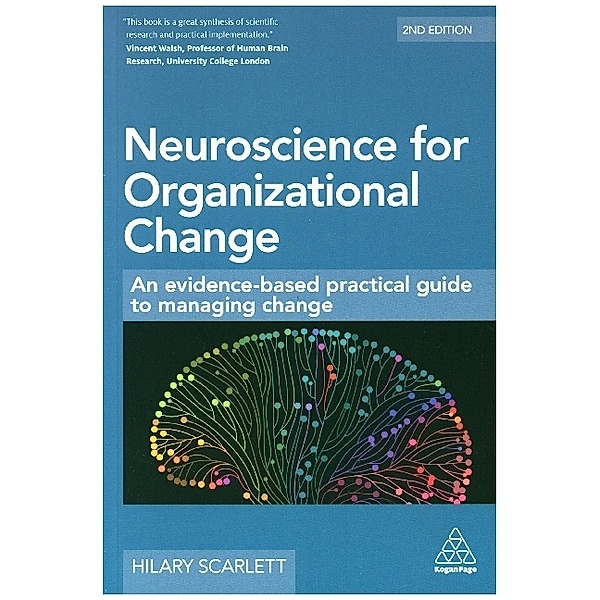Neuroscience for Organizational Change
An Evidence-based Practical Guide to Managing Change
(Sprache: Englisch)
Draw on evidence from neuroscience to help ensure effective and successful organizational change by improving employee engagement, productivity and resilience.
Leider schon ausverkauft
versandkostenfrei
Buch (Kartoniert)
38.10 €
- Lastschrift, Kreditkarte, Paypal, Rechnung
- Kostenlose Rücksendung
Produktdetails
Produktinformationen zu „Neuroscience for Organizational Change “
Draw on evidence from neuroscience to help ensure effective and successful organizational change by improving employee engagement, productivity and resilience.
Klappentext zu „Neuroscience for Organizational Change “
Organizational change can be unpredictable and stressful. With a better understanding of what our brains need to focus, organizations can increase employee engagement, productivity and well-being to successfully manage periods of uncertainty.Drawing on the latest scientific research and verified by an independent neuroscientist, Neuroscience for Organizational Change explores the need for social connection at work, how best to manage emotions and reduce bias in decision-making, and why we need communication, involvement and storytelling to help us through change.
Practical tips and suggestions can be found throughout, as well as examples of how these insights have been applied at organizations such as Lloyds Banking Group and GCHQ. The book also sets out a practical science-based planning model, SPACES, to enhance engagement.
This updated second edition of Neuroscience for Organizational Change contains new chapters on planning the working day with the brain in mind and on overcoming the difficulties related to behavioural change. It also features up-to-the-minute wider content reflecting the latest insights and developments, and updated case studies from the first edition which give a long-term view of the benefits of applying neuroscience in organizations.
Inhaltsverzeichnis zu „Neuroscience for Organizational Change “
-
- Chapter - 00: Preface;
- Section - ONE: The challenge;
-
- Chapter - 01: Introduction to neuroscience;
- Chapter - 02: Brain facts;
- Chapter - 03: Why our brains don't like organizational change;
- Section - TWO: What can we do?;
-
- Chapter - 04: Performing at our best during change;
- Chapter - 05: Our social brains: The role of leaders and managers;
- Chapter - 06: Managing emotions during change;
- Chapter - 07: Decision-making and bias;
- Chapter - 08: Communication, involvement and the role of storytelling;
- Chapter - 09: Planning change with the brain in mind;
- Chapter - 10: Changing behavior;
- Chapter - 11: Planning the working day to maximize productivity;
- Chapter - 12: Applying neuroscience in the organization;
- Chapter - 13: Index;
Autoren-Porträt von Hilary Scarlett
Hilary Scarlett
Bibliographische Angaben
- Autor: Hilary Scarlett
- 2019, 2. Aufl., 288 Seiten, Maße: 15,8 x 23,3 cm, Kartoniert (TB), Englisch
- Verlag: Kogan Page
- ISBN-10: 0749493186
- ISBN-13: 9780749493189
- Erscheinungsdatum: 25.07.2019
Sprache:
Englisch
Pressezitat
"This book is a great synthesis of scientific research and practical implementation. It enables readers to understand the science and then apply it to improve both their own performance and that of their teams." Vincent Walsh, Professor of Human Brain Research, University College London
Kommentar zu "Neuroscience for Organizational Change"





Schreiben Sie einen Kommentar zu "Neuroscience for Organizational Change".
Kommentar verfassen